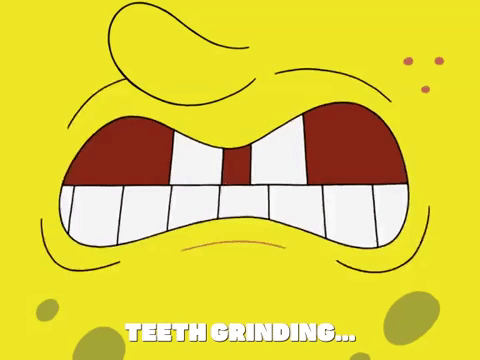TMJ
The temporomandibular joint (See why it’s abbreviated?), also known as the TMJ, is the joint that connects your jaw to your skull. The mandible attaches to the temporal bone which is part of the skull. The joint is located just in front of your ear and is surrounded by muscle, bones, blood vessels and nerves. Problems in this area can often lead to neck pain and headaches, ear and face pain, or your jaw locking or snapping while you chew. This is known as temporomandibular dysfunction (TMD). Studies are unclear as to why, but the research shows that more females have TMD than males. Go figure.
Causes
The most common causes of TMD include trauma and osteoarthritis. Grinding your teeth is the most common type of trauma. This can result in inflammation of the joint and spasms of the surrounding muscles which help you chew. This occurs most often at night while you sleep and can be difficult to control. This inflammation of the joint can also happen with clenching habits such as chewing gum or fingernails, usually stress habits. Degeneration of the joint can also occur, as it can with other joints in the body such as the knee and hip.
A final cause of TMD includes rheumatoid arthritis which can again cause inflammation in the joint and deterioration of the cartilage in the area. As mentioned previously, symptoms may include your ear ringing, headaches, neck pain, dizziness, facial pain and difficulty opening the mouth completely. Another common symptom is lock jaw, when the jaw either cannot open all the way or when the jaw is stuck in an open position. Not a very fun symptom.
Treatment
So how do we treat TMD? The treatment for this disorder is multifaceted. It involves the physical therapist, primary physician and dentist, all of which play an integral role. Your doctor can prescribe anti-inflammatories to help control the inflammation in the localized area. Your dentist may recommend a night splint or mouth guard created to help stop you from grinding your teeth at night. Finally, a physical therapist assists with soft tissue work both inside the mouth and outside the jaw in order to prevent and decrease spasms of the muscles for chewing. Joint mobility to the mandible will also help with improved biomechanics and smooth motion of your TMJ.
If you have significant TMJ pain, it’s important to take steps to alleviate it before it gets worse. Don’t hesitate to come in and let us help you start a plan to become pain free.
Post written by: Casey Badder, PT


